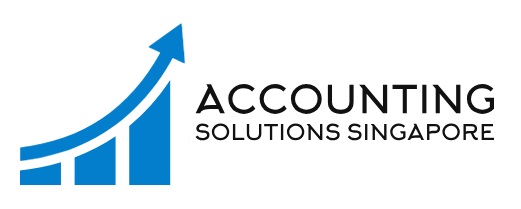
A company will always face problems from sudden small glitches to persistent obstacles and even significant drawbacks.
Some businesses don’t survive because of failure to assess risk or see the signs of trouble and to promptly act on it.
One thing you can do is to understand your business’ financial performance to help you recognise the developing trends, so you can move quickly before it becomes a big crisis.
Look out for these red flags that tell if your business might be in danger.
1. Flat or Declining Revenue
You can be easily alarmed when you discover that you have little or flat revenue. Early-stage companies usually experience a levelling off after substantial growth.
When the time comes that your business seems to slow down and then stop, it may be useful to let your business systems grow and get used to your growing capacity.
Especially when you’re spending more working hours to handle your current workload, and you’ve got no time to acquire new clients, it’s understandable that you need this levelling off period.
However, you must keep in mind that operational costs don’t naturally decline. Your rent goes up, utilities, phone, and miscellaneous bills do, too.
You might need new equipment or repair them.
Not to mention, your employees deserve raises as well, especially when they become more experienced. Because of all these, you must always look for ways to improve your growth or get back on it.
Growth is a necessity, so flat revenues still mean a loss of income.
Your costs begin to take a larger part of your income and soon affect your profit.
If this is left unnoticed, you might have a hard time handling your money, your debts, and other needed updates on your operations.
2. Declining Capital Base
Your business needs a steady flow of profit to allow you to pay due to principal debts and give you room for reinvestment in updating your operations.
This may be hindered by a negative cash flow when you have flat revenue growth. Eventually, you might find yourself in a predicament of not getting enough money to fund significant growth and not having the capacity to borrow for funding as well.
There are few alternatives in this situation.
You may choose to look for funds from outside investors or sell off assets to raise money.
Either way, you may lose something of your company.
In the former, you’ll have to give up a bit of control; in the latter, you may sell something you might need later on.
3. Jeopardised Output Due to Equipment Failures
Your existing operations will also be affected by negative cash flow.
Since you don’t have enough cash to ensure your equipment are working properly, you might run into some operational glitches.
This will then threaten your productivity, efficiency, and quality outputs.
Moreover, total breakdowns will halt your operations and cause your employees to accomplish less or nothing at all. Because of this, your direct costs will rise, and your profits will further decrease.
4. Low Employee Morale or Increased Turnover
This is one of the most often cited red flags. Your employees play a significant role in the growth and success of your business.
Their performance affects your company’s progress as well as it affects their morale and productivity. Furthermore, when they’re feeling negative about their work, their productivity is affected.
You can observe their behaviour. Are they unmotivated or disappointed? Are they angry or confused?
Are they working on cheap materials and equipment?
Do they often take time off or become less efficient? Are you openly communicating with them?
Just like budget cuts, poor employee morale also affects and hurt your business.
Even your most loyal team members may step back and become depressed. Others may even seek employment somewhere else.
Remember that they also reflect the face of the company, so if a negative look is reflected in public then your customers may see it too.
Remain active and energised and spread this positivity to your members.
Include them in brainstorming sessions in generating ideas to increase business.
Keep a sense of community by enlisting their support.
This may even help strengthen your position than speeding up your decline. Should you need advice, speak to payroll professionals.
5. Unpaid corporate tax
This may happen accidentally, but it can grow quickly.
Although as a business owner you wouldn’t want to have troubles with the tax authority, there may come a time when one unpaid tax snowballs into a huge problem.
You may soon owe a lot of tax but not have the money to pay for it.
Keep in mind that tax authority has the power to collect tax owed that exceeds even those of ordinary creditors. They are very effective in collecting, from simply demanding for payment, to filing to claim your property, to imposing on your bank or customers.
Aside from this, your financial burdens may grow quickly, especially if you failed to file the unpaid returns. Because of this, you’ll end up paying more because of penalty and interest.
Furthermore, you can be personally liable if you’re the responsible officer for financial decisions.
You can be assessed along with your company and collection actions will also be aimed at your assets.
Moreover, your business can go under criminal prosecution, especially for not remitting sales tax.
Since the money belongs to the state and not to your company, this can be charged with theft. In this situation, it’s best to seek advice from our tax service team.
6. Crash or Closure of Major Customers
It’s hard to turn down a client that offers you a lot of projects.
Before you know it, they have become your major client and may even become dependent on them. Businesses are advised against this, although this may be the reality for those in an industry with few players.
However, your business may be in trouble if this major customer experiences a great setback, budget cuts, reorganizations, or even closure. Because of this, you should be aware with what’s happening within your industry and your customers.
Always take action and don’t wait until you’re on the losing end.
When the orders and payments get slower, then you should look for ways to acquire a new business or get paid.
Nevertheless, keep opening your lines of communication with your customer.
7. Pricing Pressure Due to New Technology
Almost every year, a new technology is introduced.
Businesses are being run with the help of various technologies and equipment to expedite operations and ensure efficiency.
This is especially true to labor-intensive businesses since they need labor-saving devices. Pricing pressures come from domestic companies that can afford new technologies as well as offshore operations with low-cost labour.
Because of this, they lower their costs while still acquiring a margin of profit.
If an older company fails to keep up with these technologies, then they will most likely fail to compete. You can’t just stay in business without making a profit.
Businesses aren’t just about a great idea, product, or innovation.
It’s also about carefully understanding all that goes about the firm.
Moreover, it’s about income exceeding costs and, of course, creating profit.
Should you need assistance or would like to find out more about annual compilation services in Singapore, please send an email to Contact@AccountingSolutionsSingapore.com, and our business advisor will contact you.
